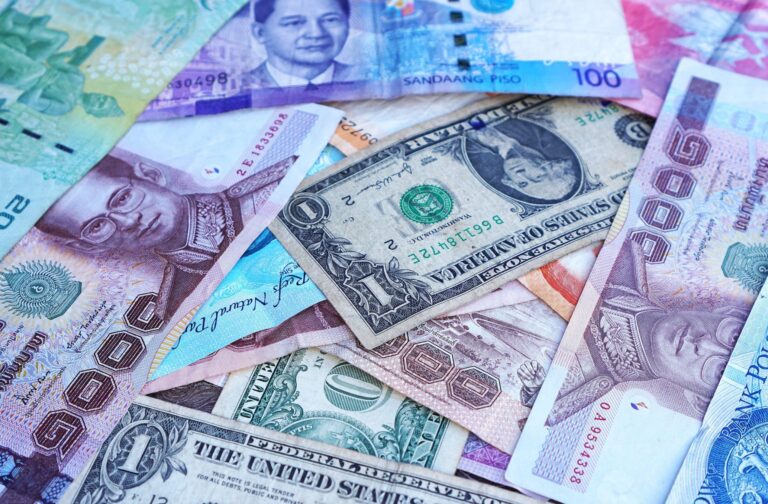The global financial landscape is constantly evolving, offering both opportunities and challenges for businesses and individuals alike. While technological advancements have streamlined financial transactions and enhanced global connectivity, they have also created new avenues for criminals to exploit. Money laundering, the act of concealing the origins of illegally obtained funds to make them appear legitimate, remains a pervasive threat, with estimates suggesting that illicit financial flows reach trillions of dollars annually.
In 2024, the fight against money laundering is more crucial than ever, as criminals are continuously adapting their tactics to exploit emerging technologies and vulnerabilities. Understanding the latest trends in money laundering scams is essential for businesses, financial institutions, and individuals to protect themselves and safeguard the integrity of the financial system.
What is Money Laundering Scams
Money laundering, the process of disguising the origins of illegally obtained funds to make them appear legitimate, is a pervasive criminal activity that undermines the integrity of financial systems and facilitates other illicit activities, including terrorism financing and organized crime. Money laundering scams, a subset of this broader category, involve sophisticated schemes designed to obfuscate the true source of illicitly gained funds and integrate them into the legitimate financial system. These scams often exploit emerging technologies, social engineering tactics, and the vulnerabilities of individuals and businesses.
Emerging Trends in Money Laundering Scams
1. Cryptocurrency Abuse
Cryptocurrencies have provided criminals with a new and relatively unregulated platform for laundering illicit funds. The anonymity and cross-border nature of cryptocurrency transactions make it attractive for criminals to move and conceal their ill-gotten gains. Criminals are using cryptocurrencies to buy goods and services, fund criminal enterprises, and even launder money through legitimate businesses.
2. Fraudulent Investment Platforms
Scammers are increasingly creating fake investment platforms to lure unsuspecting individuals into investing in fraudulent schemes. These platforms often promise high returns and offer seemingly legitimate investment opportunities, only to disappear with investors’ funds once the scam is exposed. Criminals are exploiting the ease of registering cryptocurrency exchanges and the lack of regulations in the space to create fake investment platforms. They are also using social media and other online platforms to advertise their fraudulent schemes.
3. Cybercrime and Social Engineering
The convergence of cybercrime and social engineering tactics is creating sophisticated scams that target both businesses and individuals. Phishing emails, fake websites, and malware are used to steal sensitive financial information, which can then be used to launder money through various methods. Criminals are using advanced techniques such as phishing and malware to trick victims into giving up their personal information. They are also targeting organizations by sending phishing emails that look like they came from legitimate sources.
4. Dark Web and Black Market Transactions
The dark web, an encrypted portion of the internet, serves as a haven for criminals to conduct illegal activities, including money laundering. On the dark web, criminals can exchange illicit goods and services for cryptocurrency, making it difficult to trace the origins of the funds. Criminals are using the dark web to sell stolen credit card information, counterfeit goods, and other illegal items.
5. Synthetic Identity Fraud
Synthetic identity fraud is a type of identity theft where criminals create multiple fake personas using stolen or fabricated information. These personas are then used to open bank accounts, obtain credit cards, and commit other financial crimes. Criminals are using synthetic identity fraud to launder money and obtain loans.
6. Mobile Scams
Mobile devices are becoming an increasingly popular target for money laundering scams. Criminals are using SMS, mobile apps, and other mobile technologies to steal personal information and commit fraud. Criminals are using mobile app phishing to trick victims into clicking on malicious links or downloading malware.
7. Counterfeiting and Forgery
Counterfeiting and forgery are still popular methods for laundering money. Criminals are using fake currency, counterfeit checks, and forged documents to launder money. Criminals are using advanced techniques to make counterfeit money and documents that are difficult to detect.
8. Structuring and Layering
Structuring and layering are two common methods for laundering money. Structuring involves breaking up large transactions into smaller ones to avoid reporting requirements. Layering involves moving money through a series of accounts to obscure its origins. Criminals are using these techniques to make it more difficult for law enforcement to track their illicit activities.
9. Trade-Based Money Laundering
Trade-based money laundering involves using the international trade system to launder money. This can be done by overstating or understating the value of goods or services traded, or by using false invoices. Criminals are using trade-based money laundering to launder large amounts of money.
10. Beneficial Ownership Disclosure:
The Financial Action Task Force (FATF) has recommended that countries require banks and other financial institutions to disclose to law enforcement the beneficial ownership of bank accounts. This is in an effort to prevent criminals from using shell companies and other illicit means to hide the true owners of their property.
Countermeasures to Combat Money Laundering Scams
The ever-evolving nature of money laundering scams requires proactive and comprehensive measures to combat its infiltration into the financial system. Here are 10 effective countermeasures to combat money laundering scams in 2024:
1. Enhanced Regulatory Scrutiny:
Governments and financial institutions must strengthen regulatory frameworks to combat money laundering. This includes implementing stricter AML/CFT (Anti-Money Laundering/Counter-Terrorism Financing) policies, conducting enhanced due diligence on customers and transactions, and sharing information more effectively among law enforcement agencies.
2. Technology-Driven Solutions:
Embrace technological advancements to detect and prevent money laundering activities. Machine learning algorithms can analyze vast amounts of data to identify suspicious patterns and transactions, while blockchain analytics tools can trace the movement of cryptocurrency across multiple wallets and exchanges.
3. Public Awareness and Education:
Raise awareness among businesses, financial institutions, and the general public about money laundering schemes. Educational campaigns can help individuals recognize common red flags and adopt safe financial practices to protect themselves from becoming victims of scams.
4. International Cooperation:
Collaboration among law enforcement agencies and financial regulators across borders is essential to effectively combat money laundering. International initiatives such as the Financial Action Task Force (FATF) promote the development and implementation of effective anti-money laundering measures globally.
5. Enhanced Customer Due Diligence (CDD):
Introduce enhanced customer due diligence (CDD) procedures to thoroughly vet potential customers and understand their financial background. This involves conducting background checks, verifying identities, and understanding their source of funds.
6. Suspicious Activity Reporting (SAR):
Implement a robust SAR system to promptly report suspicious transactions to law enforcement authorities. This encourages financial institutions to identify and flag illicit activities, enabling timely investigations and disruption of criminal networks.
7. Know Your Customer (KYC):
Adopt stringent KYC policies to verify the identity of customers and understand the purpose of transactions. This helps in identifying potential red flags and preventing money laundering through the use of fake identities or false pretenses.
8. Blockchain Analytics:
Utilize blockchain analytics tools to track the movement of cryptocurrency and identify suspicious patterns. Blockchain technology provides a transparent record of transactions, making it easier to trace the flow of illicit funds.
9. Data-Driven Risk Assessment:
Implement data-driven risk assessment models to identify customers and transactions with a higher risk of money laundering involvement. These models can analyze various factors, such as transaction patterns, customer demographics, and geographic locations.
10. Continuous Monitoring:
Establish a continuous monitoring system to identify and address emerging threats and patterns in money laundering scams. This requires constant vigilance and adaptation to the evolving tactics of criminals.
Where to Report Money Laundering Scams?
f you are a victim of money laundering scam, you can report it to the following authorities:
- Federal Bureau of Investigation (FBI): https://tips.fbi.gov/
- Internet Crime Complaint Center (IC3): https://www.ic3.gov/
- Financial Crimes Enforcement Network (FinCEN): https://www.fincen.gov/
- Federal Trade Commission (FTC): https://www.ftc.gov/media/71268
- Securities and Exchange Commission (SEC): https://www.sec.gov/reports
- Your state attorney general’s office
- Your local police department
You can also report money laundering scams to the following non-profit organizations:
- National Foundation for Credit Counseling (NFCC): https://www.nfcc.org/
- Consumer Financial Protection Bureau (CFPB): https://www.consumerfinance.gov/
- American Bankers Association (ABA): https://www.aba.com/
- Financial Industry Regulatory Authority (FINRA): https://www.finra.org/
By reporting money laundering scams, you can help law enforcement officials identify and prosecute criminals and protect the integrity of the financial system.
Here are some additional resources that you may find helpful:
- FBI Money Laundering Guide: https://www.fbi.gov/news/testimony/combating-money-laundering-and-other-forms-of-illicit-finance
- IC3 Money Laundering Schemes: https://www.ic3.gov/
- FinCEN Money Laundering SAR Filing Requirements: https://www.fincen.gov/resources/filing-information
- FTC Money Laundering Prevention: https://consumer.ftc.gov/
- SEC Money Laundering Compliance: https://www.sec.gov/about/offices/ocie/amlsourcetool
Conclusion
In conclusion, money laundering remains a significant threat to the integrity of the financial system and poses a broader risk to society. As criminals continue to innovate and exploit emerging technologies, it is imperative for businesses, financial institutions, and individuals to stay informed about the latest trends and adapt their practices accordingly. By implementing effective countermeasures and promoting public awareness, we can work together to combat money laundering and protect the financial system from illicit activities.
















